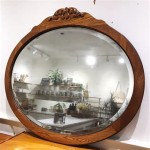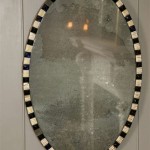The Wall of Mirrors: A Powerful Tool in Art and Psychology
The concept of a "Wall of Mirrors" carries a powerful symbolism, encompassing various interpretations across art, psychology, and philosophy. It embodies the idea of a reflective surface that multiplies and distorts reality, offering a complex and multifaceted view of self and the world. This article explores the fascinating ways in which the Wall of Mirrors metaphor has been utilized, highlighting its significance in different contexts.
The Wall of Mirrors in Art
In the realm of art, the Wall of Mirrors serves as a potent artistic device, often employed to create illusions, explore themes of identity, and challenge viewer perception. The most iconic example is perhaps the "Hall of Mirrors" at the Palace of Versailles, France, which features a breathtaking expanse of mirrors reflecting the grandeur of the palace and its inhabitants. This magnificent installation exemplifies the use of mirrors to create an overwhelming sense of depth and illusion, blurring the lines between reality and reflection.
Beyond its architectural grandeur, the Wall of Mirrors has been a recurring motif in various artistic mediums. Artists like Salvador Dalí and René Magritte employed mirrors in their surrealist works to distort and question the nature of reality. Dalí's paintings often feature distorted reflections that challenge viewers' understanding of space and perspective, while Magritte's works explored the relationship between objects and their representations, using mirrors to create paradoxical and thought-provoking imagery.
The Wall of Mirrors in Psychology
In psychology, the Wall of Mirrors metaphor is often used to represent the complex and sometimes distorted ways in which individuals perceive themselves and the world around them. It highlights the various cognitive biases and psychological defenses that shape our self-image and influence our interactions with others. For example, the concept of "confirmation bias" can be likened to a mirror reflecting only the information that confirms our existing beliefs, while ignoring evidence that contradicts them.
The Wall of Mirrors also emphasizes the importance of introspection and self-awareness. By confronting our own reflections, both literal and figurative, we can gain a deeper understanding of our thoughts, feelings, and motivations. This process of reflection, however, can also be challenging and uncomfortable, as it may reveal aspects of ourselves that we prefer not to acknowledge. The Wall of Mirrors, in this context, represents the potential for both self-discovery and self-deception.
The Wall of Mirrors in Philosophy
Philosophically, the Wall of Mirrors metaphor explores themes of consciousness, perception, and the nature of reality. It raises questions about the extent to which our understanding of the world is shaped by our own subjective experiences and perspectives. The idea that reality is a construct, constantly being redefined and shaped by our interactions with it, is captured by the image of the Wall of Mirrors, where each reflection reveals a slightly different interpretation of the original image.
The Wall of Mirrors also serves as a metaphor for the interconnected nature of all things. Just as mirrors reflect and amplify light, our actions and perceptions ripple out and impact the world around us. This interconnectedness emphasizes the need for empathy and understanding, as each individual's perspective contributes to the collective understanding of reality.

13 Mirrors Gallery Walls Ideas To Copy Lolly Jane

Antique Mirror Wall In 2024 Decor Living Room Apartment

Bathroom Idea Mirror Gallery A Storied Style

13 Mirrors Gallery Walls Ideas To Copy Lolly Jane

How To Decorate Around A Mirror

Ways To Decorate With Mirrors Ivillage Mirror Gallery Wall Decor

7 Best Ways To Enhance Your Wall Mirrors In 2024

13 Mirrors Gallery Walls Ideas To Copy Lolly Jane

Wall Mirror Design Ideas For Your Home Cafe

How To Decorate With Mirrors Ideas Advice Lamps Plus








